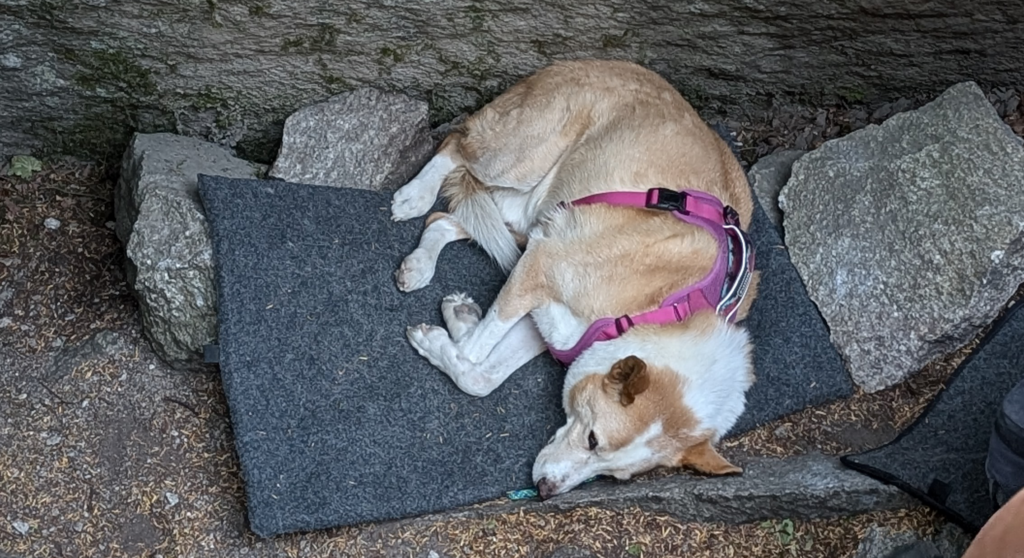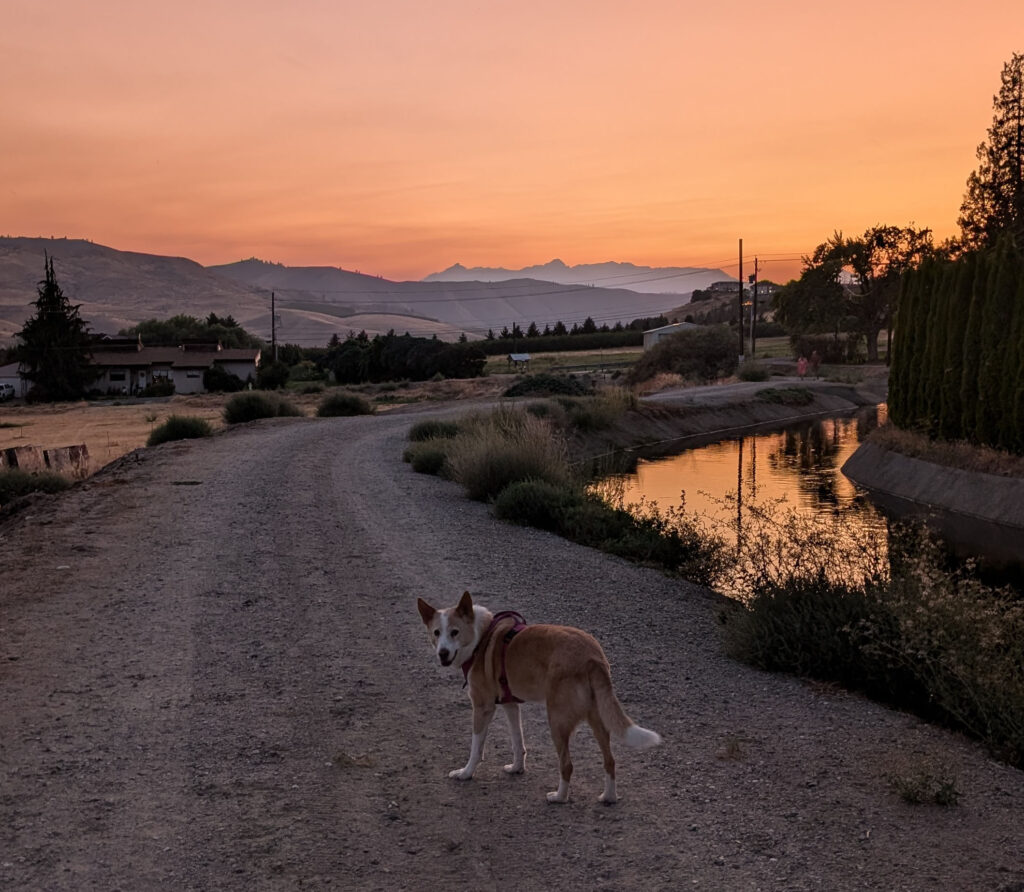
For 13 years, my dog Ty has been perennially ahead of me, uncatchable. He’s always pushed me to move faster. For me, the toughest thing about having an aging dog has been moving faster than him for the first time.
Cardio isn’t top of mind for most climbers, but maybe at least part of the year it should be. Higher cardiovascular markers indicate not just better athletic performance but better general health. And while most walking doesn’t qualify as the magical “zone 2” exercise, it is without a doubt, better than nothing. When I assess climbers, I always ask about cardio minus walking. Many climbers tell me that walking is what they get, especially if they have dogs.
For the last few years I’ve tried to fit in a couple dedicated cardio sessions a week, unless I’m doing long approaches. But as long as I’ve had a dog, I’ve been able to count on walks. Long ones and short ones – but almost always fast ones.
Dogs are a cruel mirror of our own aging. In them we see unbridled youth, optimism personified – the reason we have the word dogged. Then, a heartbeat later, grey whiskers and the physical humiliations of time.
I used to laugh at how many miles he could rack up on a hike – probably at least double mine. Nowadays it’s the opposite, with me making trips back to encourage him to keep up. Like older climbers making their pilgrimage to the Red, he prefers a nice paddle to sprinting these days.
This summer in Squamish, Ty got in the best shape of his geriatric phase. It was easy there, with dog parks everywhere and daily trips to the boulders. Seeing him learn to coordinate his back legs to jump at the same time, effectively increasing the height of obstacle he could handle, felt like a miracle of nature. I found a lot of joy in that.
At home, every trip out has to be calculated to determine if he’s up for it. Not everything is roadside. There’s no tree cover like BC, and heat is a major issue for dogs with kidney disease. Suddenly bouldering with the dog is not a given. That’s one strike to his physical activity, and that much more time he spends alone.
Worse yet, the practical need to walk/hike without him so I can get enough exercise burns me with guilt. Do I take him for a 40 minute leisure stroll or leave him staring after me so I can cover twice the ground? People who don’t own dogs won’t understand the level of betrayal that going for a walk without your dog involves.
These are the little decisions that plague every person’s training week. Our ability to progress is determined not by minutiae in a sheet, but a continuous balance of demands and desires. A series of tedious decisions, each one requiring saying No to someone or something to unlock a Yes elsewhere. Sometimes that No is really difficult or even impossible.
I’m sure many people had an immediate emotional response to the notion of leaving a dog behind to hike without them – I do too, so I miss out on a bit of cardio every week now. That’s not nothing. In the big scheme these decisions add up to one’s athletic performance and recovery. I’m 37 with, by-and-large, a desk job. I need that cardio.
It’s easy to sit back and drop platitudes about commitment and effort, and many coaches and influencers do. It’s much harder to empathize with people doing their best to meet all the demands and desires in their life. Not the demands of physical activity guidelines or the NSCA or their climbing coach or the implied demands of their podcast feed – but the demands of their life.
I’ve never been more busy, nor more efficient; I’ve been more active, but not always for the right reasons. I’ve never had more paths open to me in each moment, and I’ve never wrestled more with picking the right one.
I’m hurtling towards middle age now, by definition. Jobs, spouses, kids, pets, chores, endless dishes and a frustrating need to lie down and sleep – demands fill every athlete’s day, and in my 30s they’ve seemed to multiply endlessly. The older I get, the more it feels like that upkeep is not just time passing – it’s life passing.
And truly these passages of time also fill life with meaning. Not meaning from some fabricated number/letter banality in a guidebook, but from a state of being. A harmony with one’s environment and a comfort with one’s inner self. Sometimes, that harmony results in a productive flow state or even a tick mark.
Increasingly, to me, the harmony itself is the goal.
The companionship and security are great, but to me, their unflappable here-now-ness is the big benefit of owning a dog. Whether the walks are fast and full of pep or slower and pensive, dogs are unswervingly in the moment. Having a creature around you that’s constantly in the moment is powerful. Show me a climber who can be in the moment and I’ll show you a climber who can send.
That works for more than just climbing – show me a climber who has a good relationship with doing the dishes, and I’ll show you a climber who can probably get a lot of training done in a week.
For now, I’ll dig a little deeper. I’ll bring the dog to the board session so he can whine at me guilelessly in between napping. I’ll hit the stairmaster while I’m at the gym because I know going for a hike without him wouldn’t be worth the guilt. I’ll walk a little slower when I can tell his hip is bugging him, because he never got upset when I skipped his walk because my back hurt.
These are the compromises that our training is shaped by. Not a lust for completeness, not a hoarding of tasks or sends, but a balance. A swinging back and forth. Some for them, a little for you, and a lot of firm “no, not today” to the things that can wait.
And thus: another board session, another day at the crag, another round on the stairmaster. Another spreadsheet, email, voice note. Another sinkful of dishes. That’s life.
Another leisure stroll by the canal, sky streaked pink like it’s ashamed of some secret, the warm breeze off the hills bringing good scents. I don’t know what he can smell, but I’m glad he can still smell it. He enjoys it for us both.
